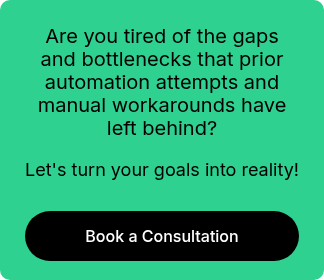Artificial Intelligence & Machine Learning
Infocap’s AI & ML platform integrates seamlessly with your existing systems, enabling you to deploy predictive models, natural language processing, and computer vision at scale.
Our experts work with you to identify high-impact use cases, build custom models, and ensure data quality and governance. From fraud detection and demand forecasting to intelligent chatbots and image recognition, Infocap delivers measurable business outcomes. We provide continuous monitoring, retraining, and support, ensuring your AI investments remain accurate, relevant, and aligned with evolving business needs.
AI & Machine Learning Solutions
Artificial Intelligence (AI) and Machine Learning (ML) are revolutionizing how organizations solve problems, make decisions, and deliver value. Infocap’s AI & ML capabilities harness the power of advanced algorithms to analyze data, predict outcomes, and automate complex tasks—enabling your business to operate smarter and faster.
Whether you’re looking to improve customer experience, optimize operations, or unlock new revenue streams, our solutions are tailored to your unique needs. Infocap’s human-centric approach ensures that AI and ML are explainable, ethical, and aligned with your business goals, empowering your teams to innovate with confidence.
What Intelligent Automation Means for AI & ML
Intelligent automation powered by AI and ML means organizations can move beyond rule-based automation to create systems that learn, adapt, and improve over time. AI-driven automation can handle complex, judgment-based tasks—such as interpreting unstructured data, making predictions, or personalizing customer interactions. Infocap ensures that AI is transparent, accountable, and designed to augment human expertise, not replace it. This enables your teams to focus on strategic decision-making, creativity, and relationship-building, while automation handles the heavy lifting and repetitive analysis.
Predictive Analytics & Forecasting
AI models analyze historical and real-time data to forecast trends, demand, or risks. For example, in retail, predictive analytics can anticipate inventory needs, while in finance, it can flag potential credit defaults. These insights enable proactive decision-making and resource allocation, reducing costs and improving outcomes.
Natural Language Processing (NLP)
NLP enables systems to understand, interpret, and generate human language. This powers chatbots, virtual assistants, and automated document analysis—allowing organizations to automate customer service, extract insights from emails, or summarize lengthy documents with speed and accuracy.
Image & Video Analysis
Computer vision algorithms can detect objects, read handwritten text, or monitor security footage. In healthcare, this enables automated diagnosis from medical images; in manufacturing, it powers quality inspections. Automated image analysis increases accuracy, reduces manual review, and enables new services.
Personalization & Recommendation
AI-driven recommendation engines analyze user behavior and preferences to deliver personalized content, offers, or experiences. This boosts engagement, conversion rates, and customer satisfaction—whether in e-commerce, media, or financial services.
Areas to Automate
Fraud Detection
Deploy AI models to analyze transaction patterns and flag anomalies in real time. This enables organizations to detect and prevent fraud faster than manual review, reducing financial losses and compliance risks.
Customer Support Automation
Use NLP-powered chatbots and virtual assistants to handle common inquiries, resolve issues, and escalate complex cases. This improves response times, reduces support costs, and enhances customer satisfaction.
Demand Forecasting
Apply machine learning to sales and supply chain data to predict future demand, optimize inventory, and reduce stockouts or overstock. Accurate forecasting improves cash flow and operational efficiency.
Document Classification
Automate the sorting and tagging of documents—such as contracts, emails, or claims—using AI to extract key information and route items to the right workflow, reducing manual effort and errors.
Image Recognition
Use computer vision to automate quality inspections, identify defects, or extract information from scanned documents and photos. This increases accuracy and speeds up processing in manufacturing, logistics, or healthcare.
Churn Prediction
Analyze customer behavior and transaction data to predict which customers are at risk of leaving. AI models enable targeted retention campaigns, improving loyalty and reducing revenue loss.
Personalized Marketing
Leverage AI to segment audiences, tailor messaging, and recommend products or services based on individual preferences. This increases engagement, conversion rates, and marketing ROI.
